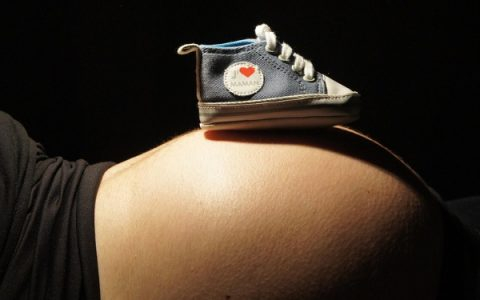Analysis and ethical discussion of the whole process of three-generation IVF combined with surrogate births

Synergistic effect of three-generation IVF technology and surrogacy
Three-generation IVF (Preimplantation Genetic Testing, PGT) combined with surrogacy offers the possibility of having healthy offspring to those who are unable to conceive on their own (e.g., uterine dysfunction, carriers of severe genetic diseases). This model requires strict adherence to medical norms and ethical guidelines, and its core process is divided into three major stages: embryo screening, surrogate matching, and transfer and pregnancy management.
The core process of three-generation IVF surrogacy
- Embryo screening and genetic testing
Ovulation Promotion and Embryo Cultivation: Women receive ovulation promotion treatment to obtain eggs, which are formed into embryos through in vitro fertilization (IVF) or intracytoplasmic single sperm injection (ICSI) and cultured to the blastocyst stage on day 5-6.
Embryo biopsy and testing: 3-5 cells are extracted from the blastocyst trophoblast for genetic analysis, including screening for chromosomal aneuploidy (PGT-A), monogenic disorders (PGT-M) and chromosomal structural abnormalities (PGT-SR). Healthy embryos are frozen and preserved, and abnormal embryos are eliminated.
- Matching and preparation of surrogate mother
Surrogate screening: Surrogate mothers need to meet the requirements of age (21-40 years old), BMI (18.5-30), healthy reproductive history, and pass infectious disease, genetic disease and psychological assessment.
Endometrial conditioning: Surrogates need to optimize the endometrial thickness to 8-12 mm through hormone therapy (e.g. progesterone) to ensure the environment for embryo implantation.
- Embryo transfer and pregnancy management
Thawing and transferring: Selected healthy embryos are thawed and transferred to the uterus of the surrogate, after which luteal support is provided to maintain pregnancy.
Prenatal diagnosis and follow-up: NT screening at 12 weeks of pregnancy, confirmation of fetal genetic health by amniocentesis at 18-24 weeks, long-term follow-up of maternal and infant health is required after delivery.
Applicable groups and medical value
- Applicable groups
Families with genetic diseases: such as carriers of single-gene diseases such as thalassemia and hemophilia, the transmission of the disease can be blocked by PGT-M.
People with chromosomal abnormalities: patients with structural abnormalities such as balanced translocation and inversion, PGT-SR can screen normal embryos.
Repeated miscarriage/transfer failure: PGT-A technology can reduce the risk of miscarriage due to chromosomal abnormality of embryos.
- Technical Advantages
Eugenics: Embryo genetic testing reduces birth defect rate from 5% to <1%.
Increased success rate: the clinical pregnancy rate of three-generation IVF combined with surrogacy reaches 60%-70%, higher than that of traditional IVF (30%-50%)
Ethical controversies and risk management
- Ethical challenges
Parental rights attribution: The legal relationship between the surrogate mother and the commissioning party needs to be clarified through a contract to avoid custody disputes.
Emotional risk: surrogates may develop emotional attachment to the fetus due to hormonal changes, requiring psychological counseling support.
- Health risk
Complications of surrogate: the incidence of gestational hypertension, diabetes, etc. is higher than that of natural pregnancy, requiring close monitoring.
Multiple pregnancies: If more than one embryo is implanted, fetal reduction needs to be negotiated to reduce the risk of preterm labor and low birth weight babies.
- Legal compliance
Differences in regional legality: some countries prohibit commercial surrogacy and only allow altruistic surrogacy; choosing a legal region to operate can protect rights and interests.
Future development and technology outlook
- Technological innovation
High-resolution sequencing: can detect chromosome microdeletions/duplications of 1Mb-4Mb, improving screening accuracy.
Mitochondrial replacement technology: for patients with mitochondrial diseases, replace defective mitochondria to cultivate healthy embryos.
- Industry standardization
Standardized process: establish surrogate database, inter-agency collaboration mechanism and third-party supervision system to reduce operational risks.
Protection of rights and interests: Promote reasonable compensation for surrogates, medical compensation and long-term health tracking system.
- Enhancement of Social Awareness
The public is gradually shifting from “commercial transactions” to “fertility assistance”, especially focusing on the needs of infertile families and LGBT groups.
Summary and Appeal
The combination of three-generation IVF and surrogacy provides a scientific solution for people with special reproductive needs, but its success depends on the synergy of medical technology, legal norms and ethical consensus. In the future, it is necessary to strengthen technical research and development, improve regulations and promote social understanding, so as to protect the rights and interests of surrogates while realizing fertility equity and healthy eugenics.
相关推荐
- Endometrial tolerance is the invisible key to IVF failure
- Seven Differences Between IVF and Natural Pregnancy
- 5 Life and Death Decisions to Ask About Embryo Talk
- Preventing and resolving Down’s syndrome: A global breakthrough in IVF technology and hope for the future
- The Ideal Childbearing Age for Surrogacy
Search within the site
Surrogacy News
Hot Tags.
Kyrgyzstan Surrogacy Agency,Global IVF Hospitals,International Surrogate Mother Recruitment